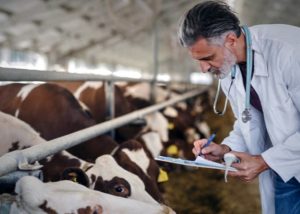
By Rehma Ali
Pakistan, as one of the top five milk-producing countries, has the potential to significantly impact global food security, alleviate poverty, and boost economic growth, especially in the aftermath of the Covid-19 pandemic’s strain on the global economy, but its dairy industry faces challenges that hinder its full potential.
A key issue is the low milk yield per cow in Pakistan, where it takes four to five cows to produce the same amount of milk as one cow in countries with advanced dairy industries, a disparity further exacerbated by inefficient management practices and poor genetics.
Moreover, many consumers have to rely on adulterated milk being supplied by local vendors because of inadequate processing infrastructure.
Pakistan’s dairy sector, which employs a significant portion of the national workforce and contributes 12pc of the GDP, is predominantly made up of small and mid-sized farms.
Small farms, representing over 70pc of the country’s total cattle heads, primarily produce milk for family consumption and local markets, but generally have low yields and lack optimized management practices; mid-sized farms, with 25 to 100 cattle, offer slightly higher yields but still struggle with management and consistency challenges.
Corporate farms, operating for over a decade, represent the most technologically advanced segment of Pakistan’s dairy industry, with 2,000 to 6,000 genetically improved cows achieving higher yields through advanced technologies; however, they face challenges in optimizing herd management and maintaining productivity due to climatic conditions and the high cost of technology.
These issues could be resolved by adopting Precision Livestock Farming (PLF). PLF technologies, such as Radio Frequency Identification (RFID) and Herd Management Systems (HMS), to help improve productivity and efficiency.
RFID tags can automate data collection, providing real-time information for better decision-making. HMS, used by corporate farms, helps manage health, reproduction, and milk production data, local expertise and language barriers hinder this.
Despite the availability of such modern technologies, Pakistan lacks a national livestock surveillance system that could track and improve herd genetics and management practices, besides offering valuable insights into livestock demographics, health, and productivity to introduce better farming practices and policies.
Pakistan’s dairy industry has the potential to address global food shortages, if it overcomes challenges of productivity, management, and technology adoption.







